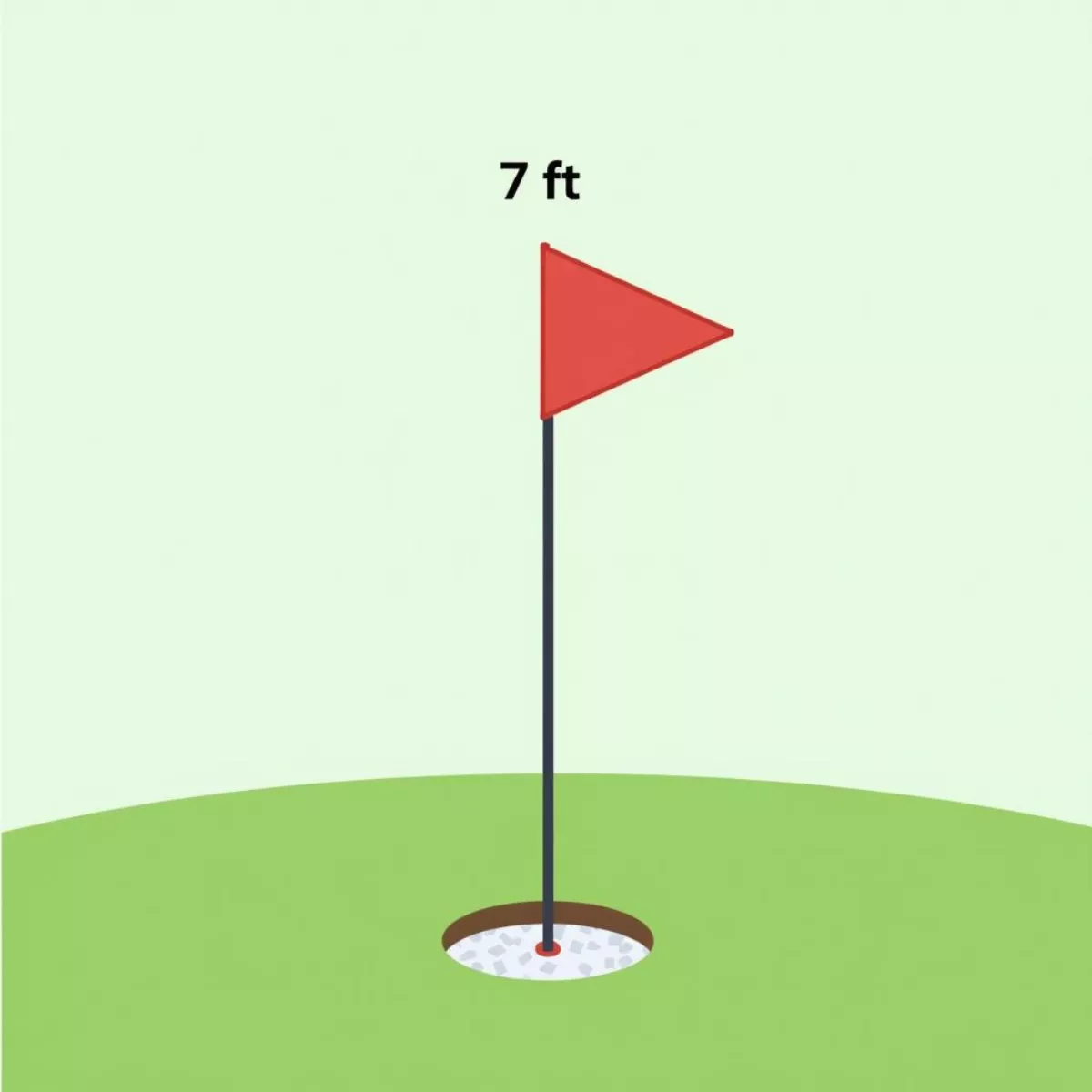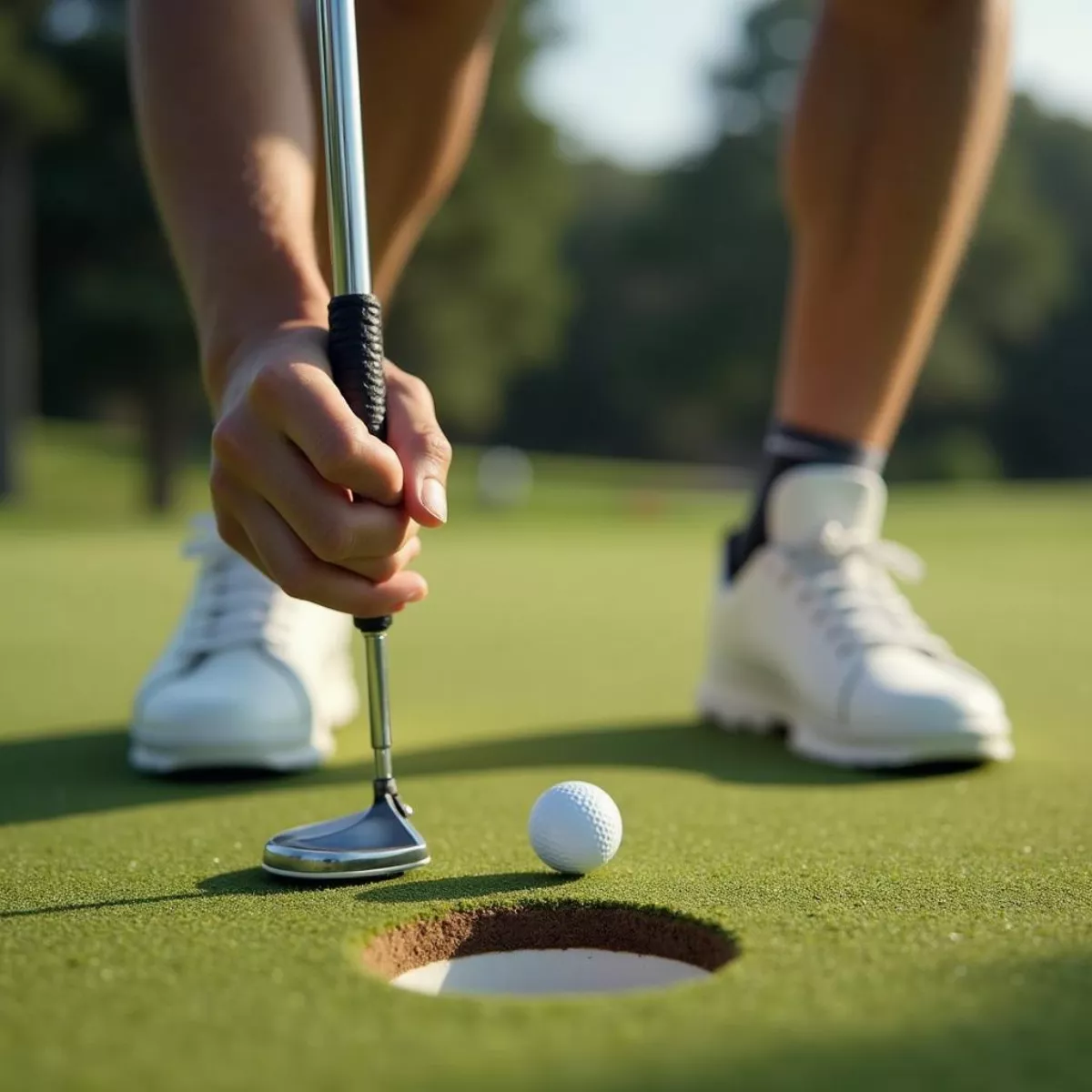When you’re out on the golf course, one of the first things you’ll notice is the flagstick flapping gently in the wind, marking the hole’s location. Ever wondered how tall it actually is? The golf flagstick might seem like a small detail, but it plays a critical role in the game of golf. In this comprehensive guide, we’ll explore the height of these sticks, their importance, and everything you need to know about them.
What Is a Flagstick?
A flagstick serves various functions on the golf course. It indicates not just the hole’s location but also provides players with a visual target during their putting. The flag itself is usually brightly colored, making it easier for players to spot from a distance.
Height of a Golf Flagstick
Standard Height
The standard height for a golf flagstick is 7 feet (or about 2.13 meters). This height allows golfers to see the flag from a considerable distance, aiding their aiming and putting.
| Measurement | Value |
|---|---|
| Height of Flagstick | **7 feet** |
| Standard Flag Size | **14 inches** |
 Golf Flagstick Height Illustration
Golf Flagstick Height Illustration
Golf Flagstick Specifications
The specifications for a golf flagstick are generally governed by the USGA (United States Golf Association). Here are the details you should know:
- Material: Typically made of fiberglass or lightweight metal.
- Weight: Designed to be light enough to avoid bending but sturdy enough to remain upright even in windy conditions.
- Color: Most commonly, the flagsticks are white or a bright color to maximize visibility.
- Reflective Tape: Many flagsticks feature reflective tape, which can be useful during early morning or late evening rounds.
How Does Height Impact Gameplay?
The height of a flagstick impacts the game in several ways. Here are a few reasons why having a standard height is beneficial:
- Visibility: A consistent height allows players to gauge distance effectively.
- Consistency: Condensed standards help maintain fairness across different courses.
- Wind Resistance: Flagsticks are designed to flutter in the wind, providing added visibility but also aiding in the decision-making process for players as they read the greens.
Importance of the Flagstick
- Guidance for Players: The flagstick helps golfers understand the contours of the green. A flag that is fluttering indicates wind conditions, which can influence shot placement and tactics.
- Psychological Anchor: The visual aspect of the flagstick serves as a psychological anchor. Spotting the flag can aid in focus and keep players oriented during their rounds.
- Aesthetic Appeal: Flagsticks also contribute to the overall beauty of the golf course. The colors of the flags combined with the green turf create a picturesque setting.
- Hole Location Marker: The placement of the flag on the green can dramatically affect gameplay, particularly in tournament settings where hole location sheets come into play.
 Golf Course with Flagstick View
Golf Course with Flagstick View
How to Use the Flagstick in Your Game
When it comes to using the flagstick to your advantage, consider the following tips:
- Aim at the Flag: Your target should be the flag. Take your time to align your shot directly at it.
- Observe the Wind: Notice how the flag is waving; it indicates the wind’s direction, assisting you in club choice and shot strategy.
- Consider Putting: When putting, you can leave the flagstick in the hole for added reference or take it out to read the slope better.
Pro Tips for Understanding Flagstick Height
- Practice Routine: During practice rounds, regularly observe the flagstick and how it affects your aim.
- Course Management: Learn how different courses position their flags; some might feature tricky placements that require additional strategic planning.
- Equipment Check: Always check the flagstick’s height before starting your round to ensure accuracy if you’re playing in a less official setting.
Fun Facts About Golf Flagsticks
- The oldest known golf flagstick dates back to the late 19th century.
- Flagsticks are often referred to as “pins” among golfers.
- Some courses may use varying heights for different holes to create unique challenges for players.
 Golfer Putting Towards Flagstick
Golfer Putting Towards Flagstick
Key Takeaways
- A standard golf flagstick height is 7 feet.
- The material, weight, and color of the stick impact its functionality.
- Different gameplay tactics can be derived from observing the flag’s position and movement.
FAQ
1. What is the standard height of a golf flagstick?
The standard height for a golf flagstick is approximately 7 feet.
2. Can the height of a flagstick vary between courses?
While most courses adhere to the standard, some may have different regulations or designs.
3. Why is the flagstick important in golf?
It provides visibility for golfers, helps in determining wind conditions, and serves as a psychological anchor.
4. Is it necessary to leave the flagstick in while putting?
It depends on personal preference. Some golfers prefer to leave it in for reference, while others take it out for a different perspective.
5. Can I practice with a flagstick at a driving range?
Most driving ranges do not have flagsticks in the same format as golf courses, but they may have markers that serve a similar purpose.
6. What material are flagsticks made of?
Flagsticks are commonly made from fiberglass or lightweight metals for durability and visibility.
7. Why do some flagsticks have reflective tape?
Reflective tape enhances visibility, especially during low-light conditions such as early morning or late evening rounds.
8. How does wind affect the flagstick?
Wind can cause the flag to move, helping golfers estimate the wind conditions and adjust their shots accordingly.
9. What color are golf flagsticks?
While the flagsticks themselves are usually white, the flags on them can be different colors based on the hole’s placement, commonly red, white, or blue.
10. Are there any regulations on flagstick height?
Yes, the USGA and other governing bodies set guidelines for standard height and specifications for flagsticks on recognized courses.
With this detailed guide, we hope you now have a better understanding of the golf flagstick, its height, and its implications for the game. Keep this information in mind the next time you hit the green, and let the colors of the flagstick guide your game!

